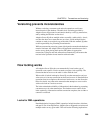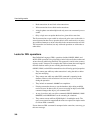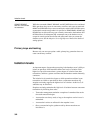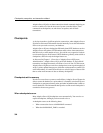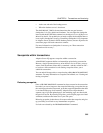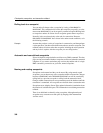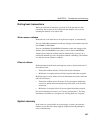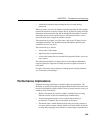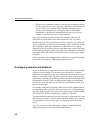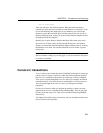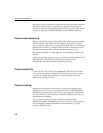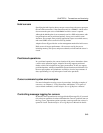
CHAPTER 8 Transactions and Versioning
307
Rolling back transactions
When you roll back a transaction, you undo all of the operations in that
transaction. We say that you are rolling back the database, since you are
returning the database to an earlier state.
What causes a rollback
Rollbacks can occur either due to an explicit user request, or automatically.
You use a
ROLLBACK statement to undo any changes to the database since the
last
COMMIT or ROLLBACK.
You use a
ROLLBACK TO SAVEPOINTstatement to undo any changes to the
database since the
SAVEPOINT you name, or else to the last SAVEPOINT.
Adaptive Server IQ rolls back the database automatically if a user is in a
transaction and then logs out or disconnects without committing. The rollback
is to the most recent commit or rollback.
Effect of rollback
Rollback returns both the main and temporary stores to their former state. It
also releases locks:
• Transaction rollback releases all locks held by the transaction.
• Rollback to a savepoint releases all locks acquired after that savepoint.
Rollback of open cursors deletes all cursor information and closes both hold
and non-hold cursors:
• Transaction rollback closes all cursors. It does not matter whether the
cursor was opened in the transaction being rolled back, or in an earlier
transaction.
• Rollback to a savepoint closes all cursors opened after that savepoint.
For more information on cursors, see “Cursors in transactions”. For more
information on rollback to a savepoint, see “Rolling back to a savepoint”.
System recovery
In the event of a system failure or power outage, or when you restart the
database server after it has been stopped, Adaptive Server IQ attempts to
recover automatically.



